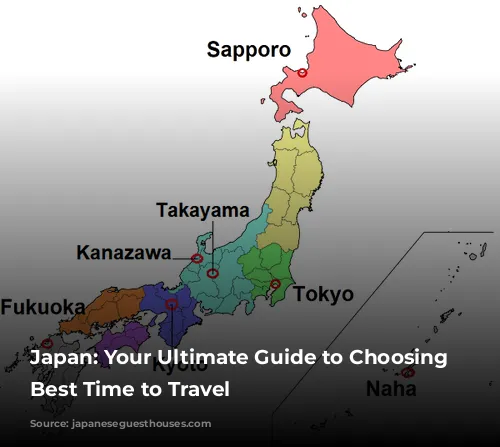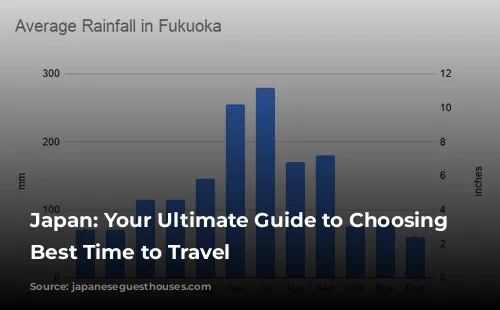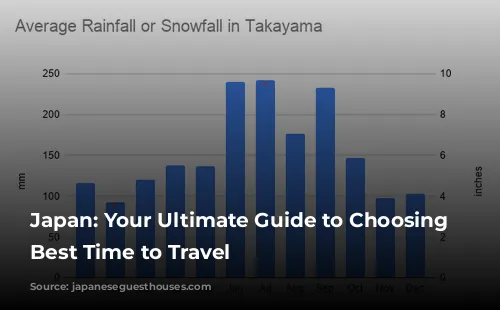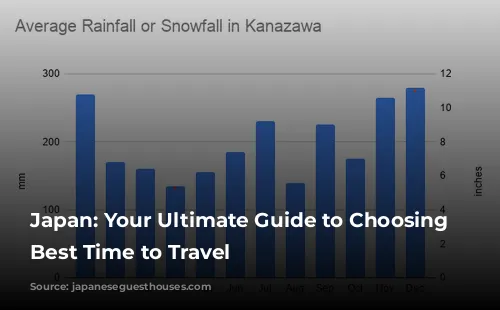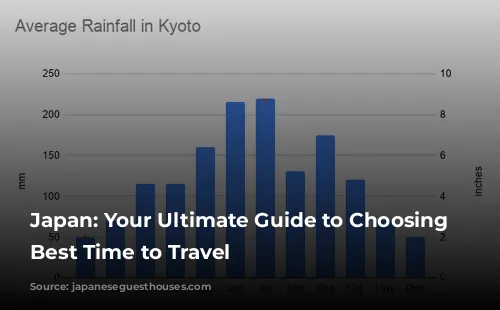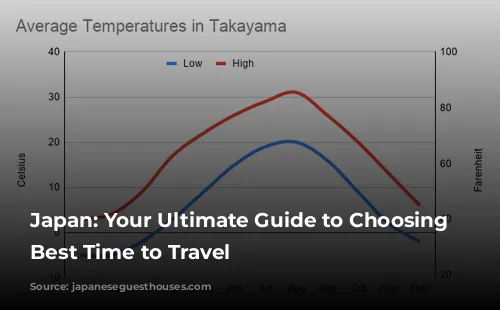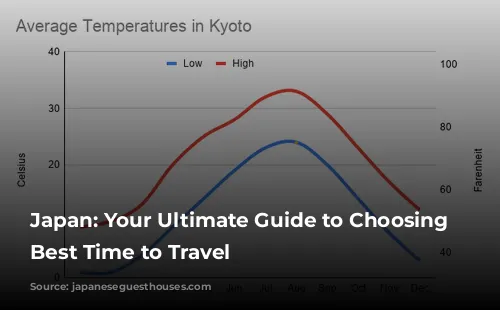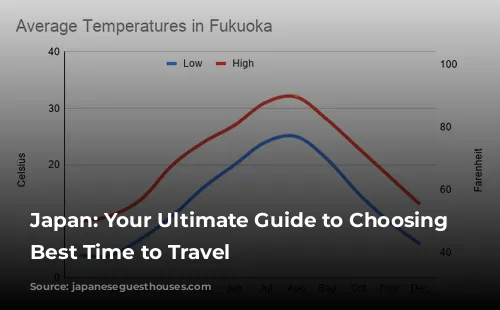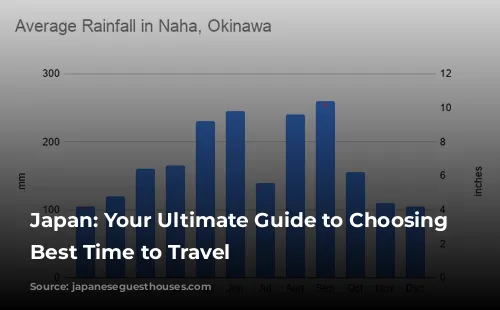Ready to embark on an unforgettable adventure in Japan? But with such a diverse landscape and a myriad of seasonal experiences, choosing the perfect time to visit can feel overwhelming. Don’t worry! We’ve got you covered. In this guide, we’ll explore the best times to travel to various regions in Japan, factoring in weather, special events, and crowd levels.
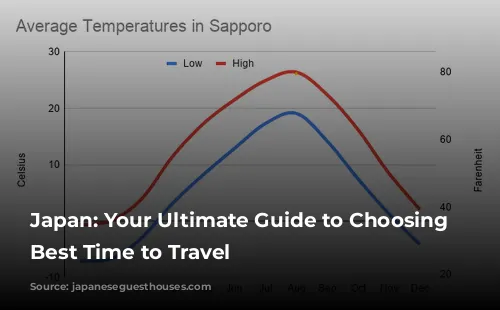
Hokkaido: A Winter Wonderland and Beyond
Hokkaido, Japan’s northernmost island, offers a unique blend of stunning natural beauty and captivating cultural experiences. But before you pack your bags, it’s important to understand Hokkaido’s distinct climate.
Winter (December to March) is the most popular time to visit Hokkaido. Imagine yourself surrounded by powdery snow, skiing down pristine slopes, or exploring frozen landscapes on a snowmobile. While the cold winds from Siberia make temperatures frigid, the snowy scenery creates a truly magical atmosphere.
Spring (late April to June) brings a burst of color to Hokkaido. Cherry blossoms paint the southern regions of Sapporo and Hakodate with delicate pink hues, while tulips and pink moss add vibrant splashes to eastern Hokkaido. It’s an ideal time to witness the island’s breathtaking transformation.
Summer (July to August) in Hokkaido offers a welcome reprieve from the sweltering heat of other Japanese regions. Mild temperatures and sunny skies create perfect conditions for exploring the island’s numerous outdoor activities.
Autumn (September to November) paints Hokkaido in a kaleidoscope of vibrant hues. Leaves transform into brilliant reds, oranges, and yellows, creating a breathtaking spectacle. This time of year also marks the arrival of fresh, seasonal produce, adding another layer of delight to your trip.
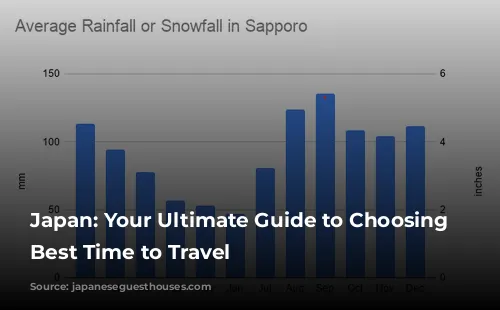
Tokyo: A Year-Round Destination
Tokyo, Japan’s bustling capital, is a dynamic metropolis teeming with vibrant energy. But the city’s charm extends beyond its neon-lit streets and bustling markets. The best time to visit Tokyo depends on your preferences.
Spring (March to May) offers a delightful blend of comfortable temperatures and blooming flowers. The iconic cherry blossoms create a spectacular spectacle in late March and early April, while other colorful blooms grace the city throughout the season.
Summer (June to August) in Tokyo is hot and humid, with temperatures reaching up to 31°C (88°F). The rainy season typically falls in June and July, but don’t let it deter you. Simply grab an umbrella and embrace the charm of a rainy day.
Autumn (September to November) brings crisp air and vibrant foliage to Tokyo. It’s an ideal time to stroll through parks, explore temples, or simply soak in the city’s fall colors.
Winter (December to February) in Tokyo offers a peaceful escape from the crowds. The city is adorned with festive decorations, and the sparkling lights create a magical atmosphere.
Kanazawa: A Blend of Traditional Charm and Modern Sophistication
Kanazawa, located on Honshu Island, is a city rich in history and beauty. Home to the exquisite Kenrokuen Garden, a testament to Japanese landscape design, Kanazawa offers a unique blend of traditional charm and modern sophistication.
Kanazawa’s climate is humid semi-continental, meaning it experiences cold, damp winters and hot, moist summers. The city is also influenced by the monsoon circulation, bringing cold, dry air in winter and hot, humid air in summer.
Winter (December to February) in Kanazawa sees heavy snowfall, with an average of over two and a half meters (8 feet) falling per year. The wet, heavy snow creates a picturesque landscape, but also requires special precautions for transportation and outdoor activities.
Summer (June to August) in Kanazawa is hot and humid, with alternating periods of fine and stormy weather. August is typically the warmest month.
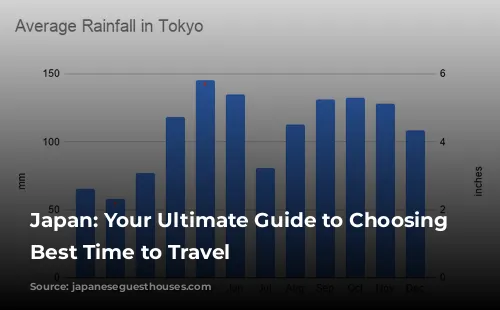
Takayama: A Mountain Escape
Takayama, nestled in the Japanese Alps, offers a refreshing escape from the bustling cities. This charming town, known for its traditional architecture and festivals, is a popular destination for those seeking a tranquil and authentic experience.
Takayama’s climate is similar to Hokkaido and the Tohoku region, characterized by cool nights even in summer and abundant snowfall in winter. The temperature difference between day and night is significant, and the humidity is low.
October is an excellent time to visit Takayama, offering warm to cool weather and vibrant fall foliage. However, the city is bustling during the Takayama Matsuri festival, held on October 9 and 10.
May is another great time to visit Takayama, as spring blooms paint the town with vibrant colors and the weather is pleasantly warm.
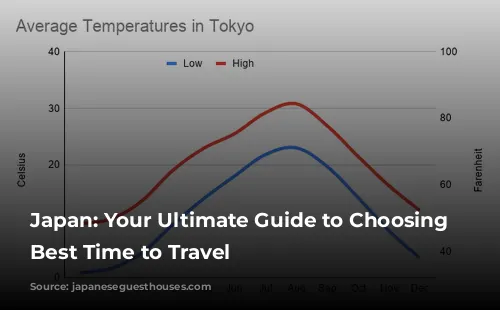
Kyoto: The Ancient Capital’s Enchanting Beauty
Kyoto, Japan’s former capital, is a city steeped in history and culture. From ancient temples and serene gardens to bustling markets and traditional crafts, Kyoto offers an unforgettable journey into Japan’s rich heritage.
Kyoto’s climate is temperate humid, with mild winters and hot, humid summers. The city is also affected by the monsoon circulation, bringing cold, sunny weather in winter and hot, humid days in summer.
Winter (December to February) in Kyoto is generally mild, with occasional cold spells. Snowfall is usually light, making it an ideal time to visit the city’s iconic Kinkakuji (Golden Pavilion) adorned in a blanket of snow.
Summer (June to August) in Kyoto is hot and humid, with temperatures reaching up to 35°C (95°F). The heat island effect, common in large cities, amplifies the heat, making the summer months particularly challenging.
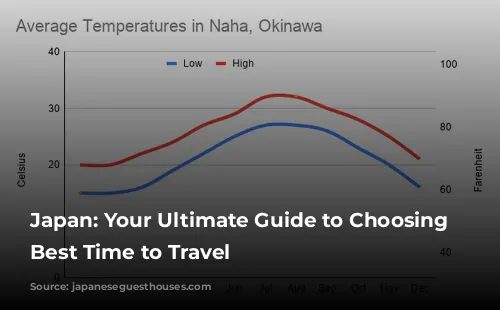
Fukuoka: A Gateway to Kyushu
Fukuoka, located on the north coast of Kyushu, is a vibrant city with a rich history and modern amenities. It serves as a gateway to the island of Kyushu, known for its volcanic landscapes, hot springs, and diverse cuisine.
Fukuoka’s climate is temperate humid, with mild winters and hot, humid summers. The city is affected by the monsoon circulation, bringing cold, dry weather in winter and hot, humid air in summer.
Winter (December to February) in Fukuoka is mild, with occasional cold periods. Snowfall is generally light, making it a comfortable time to explore the city.
Summer (June to August) in Fukuoka is hot and humid, with temperatures reaching up to 35°C (95°F).
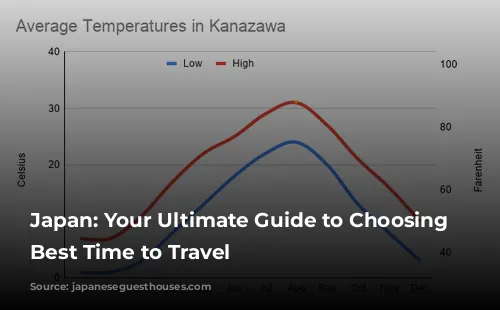
Okinawa: A Tropical Paradise
Okinawa, the southernmost of Japan’s major islands, is a true tropical paradise. With its crystal-clear waters, white-sand beaches, and vibrant coral reefs, Okinawa offers a unique escape from the mainland’s colder temperatures.
Okinawa’s climate is sub-tropical, characterized by very mild winters and long, muggy, and rainy summers.
The best times to visit Okinawa are from March to May during spring and from September to December. However, the typhoon season can extend to October, so those traveling in late autumn should be prepared for potential storms.
Whether you’re seeking a snowy wonderland, blooming landscapes, or tropical beaches, Japan has something to offer every traveler, year-round. By understanding the unique climate and seasonal highlights of each region, you can plan the perfect trip to experience the beauty and wonder of Japan.
